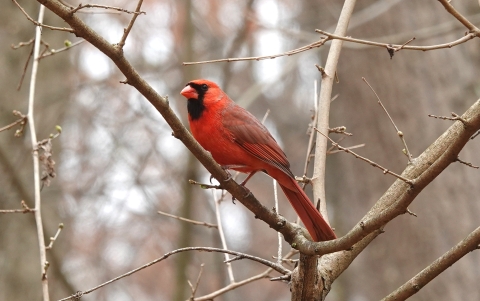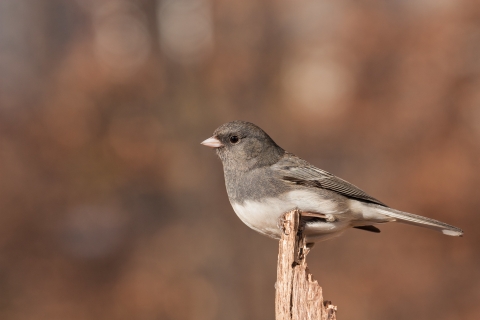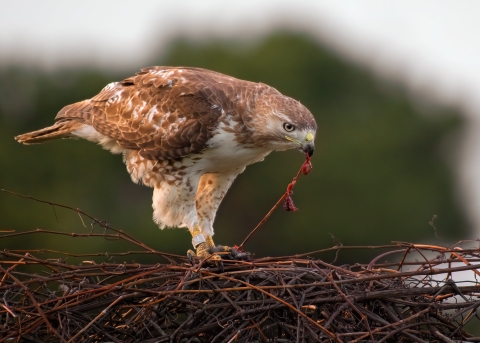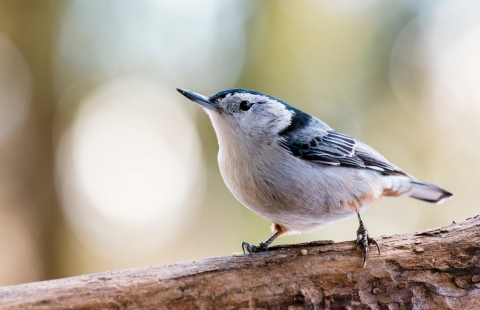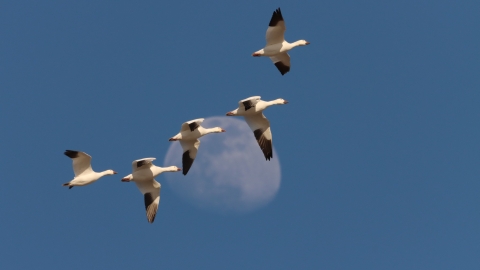Do you have any plans this weekend? The Great Backyard Bird Count is taking place from February 16-19, 2024, all around the country, and in, well, a backyard near you. The Count is a great way to get outside with friends and family and see some birds — over 300,000 people participate — and you can give back to citizen science and help those very birds while enjoying nature and having a good time.
Observe
To participate, you need only commit to 15 minutes of counting all the birds you see in your backyard, at your feeder, in a local park, or a National Wildlife Refuge.
If have a feeder, this is a good time to make sure it’s clean. We recommend cleaning feeders every week or two to reduce the spread of bird diseases or taking them down for a while if you’ve observed a sick bird nearby.
Upload Your Findings
You can upload your observations to eBird through your computer, or their free app. You will be able to see the results soon after the count is over and know that you are contributing important data to help researchers learn more about birds. Better yet, it’s a fun way to spend a few minutes, an hour, or even the whole day.
Over 7,500 bird species were reported in 2023 — nearly 70% of all the known species in the world! We can’t show you all of them, but here are some of the most common ones to get you started:
Northern Cardinal
The cardinal’s splash of feathery red is a welcome contrast to the snow and bare branches of winter. The male has a black “face mask,” a distinctive shaggy crest and a thick bill for crushing seeds. It is a common feeder visitor, often visiting in pairs — the female has a similar shape but is mostly brownish. It was the most commonly ID’d bird in the United States in 2023.
Downy Woodpecker
North America’s smallest woodpecker is black and white, and the males have a touch of red on the back of the head. It can be found in almost every state, including Alaska. It’s often mistaken for its larger relative, the hairy woodpecker, although the downy has a smaller bill in comparison to its head. When not pecking wood in a search for insects, it is notably attracted to bird feeders stocked with suet.
Dark-Eyed Junco
This is a winter bird for much of the U.S., and it shows — they appear hardy and able to withstand the coldest, snowiest days. You might often see them in groups, foraging for seeds. They have dark gray heads and upper parts, white feathers below, with a small orange bill. They are commonly seen at bird feeders.
Red-Tailed Hawk
This one of the most widespread birds of prey. in the U.S. While many raptors go south for the winter, the red-tailed hawk can be found soaring over a wide variety of habitats — including suburban neighborhoods — in much of the U.S. all winter long. If it visits feeders though, it’s not to eat the seeds!
As the name suggests, most of them do have red tails. Although there are regional variations, they are usually darker brown above and lighter below, with the namesake red tail feathers on the adults. It is one of the larger hawks in North America.
Fun fact: The screech that you hear in movies? You know, the one they usually give to a flying bald eagle? Much of the time, that’s actually a red-tailed hawk!
White-Breasted Nuthatch
The white-breasted nuthatch is a sparrow-sized bird with a long thin bill and a black “cap.” Its body is mostly soot-colored above and white below with a touch of chestnut color on the lower sides. The bird’s signature stance is clinging to the side of a tree, with its tail up and its head down. Many don’t migrate, so you might see the same birds visiting your feeder in winter and summer. It has a tendency to store seeds and other edibles in tree crevices, or even under loose bark. It’s usually found in pairs.
Snow Goose
This is another bird you likely won’t find at your feeder, but the snow goose is actually one of the most-reported birds, with nearly 2.5 million encountered in 2020. It can form flocks of tens of thousands, and there are two phases — a light phase and a less-common dark phase, so in this case, you could equally say “dark as snow.” The pink bill has a dark area where the upper and lower parts come together, called the grinning patch. Both phases have black wingtips, a white head and pinkish feet. It can be found in farm fields, marshes and other areas of shallow water, where they can be found looking for plants to eat.
These are just a few of the many birds you could see if you venture out. Here are some easy tips for bird watching, to make the experience even more worthwhile. Take a little time, get outside — or even look out your window for a while — and you’ll realize that there’s still plenty of action in the winter!
And if you like helping wildlife through citizen science, you don’t have to stop after this year’s bird count — find citizen-science opportunities year-round!

